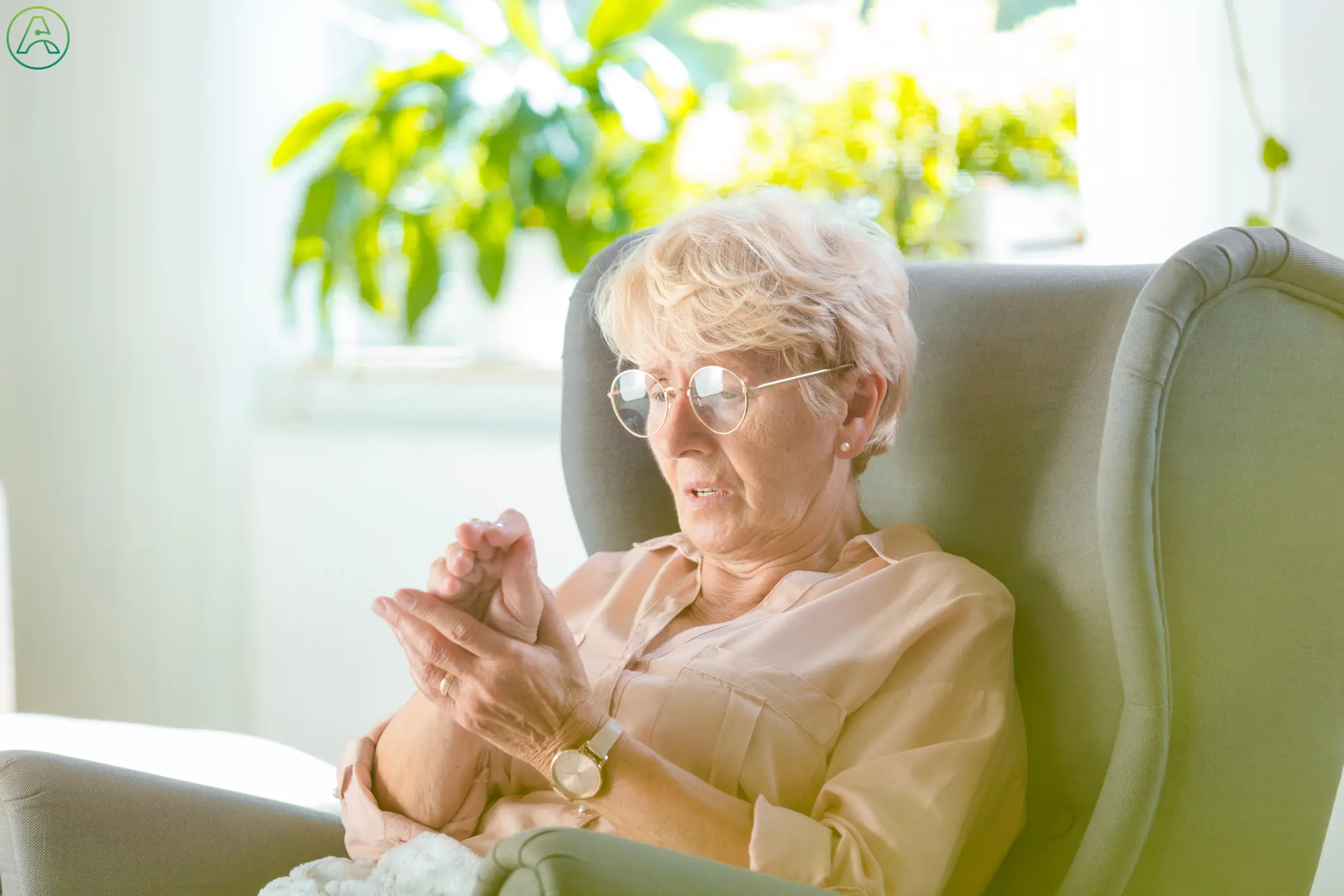Parkinson’s disease (PD) has no known cure. Family members must make long-term plans for care. This article will answer questions associated with that care plan, including:
What medical and financial aid programs are available for Americans with Parkinson’s?
What are the stages of Parkinson’s disease?
How does Parkinson’s affect communication and social life?
Who should be on a care team for a person with Parkinson’s disease?
How do I find a skilled nursing facility or nursing home for a person with Parkinson’s?
Where can I find support groups for PD?
Where can I find more information about Parkinson’s disease?
What medical and financial aid programs assist Americans with Parkinson’s?
According to the Social Security Administration's (SSA) Blue Book, depending on the nature and severity of a person’s Parkinson’s disease, a person may be eligible to receive $3,800 or more each month. Start with the Free Disability Evaluation form to learn more.
In addition, the US government offers several options to help with medical expenses.
Medicare covers people with permanent disabilities and those 65 years old or older.
Medicaid covers people with disabilities who have lower incomes.
The Affordable Care Act (ACA) may also assist those who qualify.
Medigap insurance supplements the person's Medicare coverage.
Social Security Disability Insurance (SSDI) provides people younger than 65 with Social Security disability payments if they cannot work.
Supplemental Security Income (SSI) guarantees a minimum monthly income for people aged 65 or older who are disabled and have minimal financial means.
Veteran’s Affairs (VA) provides health care benefits for veterans who have actively served in the military.
As Parkinson’s symptoms progress, your needs may change and associated care costs may rise. Stay up to date with federal and local funding, as well as nonprofits in your area that can connect you with critical resources for Parkinson’s care.
What are the stages of Parkinson’s disease?
Researchers have identified five stages of Parkinson’s disease, although no two people will experience them the same. Some people skip stages, some stay in one stage for the rest of their lives, and some progress quickly through all five stages in or out of order.
The five stages of Parkinson’s are:
Stage 1. In the initial stage, symptoms are mild and people with stage 1 Parkinson’s can stick to their regular routine without much difficulty.
Stage 2. Tremors, stiffness, and shaking start to affect both sides of the body. Difficulties walking, talking, and maintaining good posture start in this stage, although they are typically mild.
Stage 3. All the symptoms of stages 1 and 2 worsen, and people with stage 3 Parkinson’s experience more difficulty with balance, speed, and reflexes. While many people with stage 3 Parkinson’s can still live alone, it takes much more effort to complete daily tasks like dressing, bathing, and cooking.
Stage 4. Parkinson’s symptoms make daily tasks so difficult that it’s no longer possible to live alone. Someone with stage 4 Parkinson’s disease may be able to stand on their own, but likely needs a walker or cane to walk, along with daily care or assistance from a caregiver.
Stage 5. In the final stage of Parkinson’s, someone may no longer be able to walk and rely on a wheelchair to get around. Talking, swallowing, and memory become difficult. Medications that worked well for earlier stages of Parkinson’s tend to lose their effectiveness in stage 5. People with stage 5 Parkinson’s require around-the-clock care to prevent falls, choking, infection, and other potential hazards.
How does Parkinson’s affect communication and social life?
One of the most identifiable symptoms of Parkinson’s is changes in someone’s speech patterns. Someone with Parkinson’s may speak quietly or too quickly, or struggle with a monotone pitch, hoarseness, and breathiness. Some people with Parkinson’s struggle to make themselves understood, which can be frightening and extremely isolating.
As Parkinson’s symptoms progress, someone with Parkinson’s may not be able to do all the things they used to do, like playing sports, going on hikes, or driving to see friends and family. This can have an impact on your social life, self-esteem, and mental health. It’s important to stay on top of mental health and seek appropriate resources as soon as possible.
Some people with speech difficulties due to Parkinson’s benefit from augmentative and alternative communication (AAC) devices like:
Speech-to-text or text-to-speech software.
Personal amplifiers that increase voice volume.
Telephone relay systems, which allow someone with Parkinson’s to type on a keyboard and have their words read aloud on phone calls.
Communication boards, alphabet boards, and typing boards.
Voice synthesizers or speech generating devices.
To learn more about improving speech with Parkinson’s, seek the advice of a speech therapist or your neurologist.
Who should be on a care team for a person with Parkinson’s disease?
A Parkinson’s care team should include the following:
A neurologist or movement disorder specialist who sees the person with Parkinson’s periodically to assess disease progression and to prescribe and adjust medications.
A family doctor for everyday health concerns, regular checkups, and tests Family doctors can also help manage secondary symptoms of Parkinson’s disease.
A physical therapist trained in working with individuals with Parkinson’s.
A speech therapist to help improve communication. One particular speech therapy method called the Lee Silverman Voice Treatment (LSVT) is a common treatment for people with Parkinson’s.
An occupational therapist to assess the home for safety and suggest assistive devices to help people with Parkinson’s remain independent as long as possible.
A mental health specialist with extensive knowledge of Parkinson’s and access to community support resources.
How do I find a skilled nursing facility or nursing home for a person with Parkinson’s?
One of the most significant benefits of assisted living is that it is a safe environment. There is peace of mind knowing a loved one with Parkinson’s is not struggling with basic tasks, has healthy meals, is taking their medications as prescribed, and has transportation to medical appointments.
There are two types of care facilities:
A basic care facility helps maintain a person's ability to carry out necessary daily functions, like personal care and getting around. They will also ensure that the person is supervised and safe.
A skilled nursing facility is a healthcare center with at least one full-time registered nurse on-site and a doctor on call.
To understand questions to ask potential long-term care facilities, see reviews of facilities, understand the costs, and seek assistance, see the knowledgebase at Parkinsons.org.
Where can I find support groups for PD?
Support groups may help people with PD and their loved ones cope with the day-to-day challenges of Parkinson’s.
Parkinson’s support groups are available for people with PD, PD caregivers, and families.
Organizations that provide in-person or virtual support groups for people affected by Parkinson’s disease include:
Parkinson’s.Community on Facebook
Flying Solo offers support for people with Parkinson’s who live alone.
Where can I find more information about Parkinson’s disease?
Ability Central offers a series of articles to further your knowledge about Parkinson’s disease. See:



